Regarded as one of Denmark’s most important artists, Anna Ancher is virtually unknown here, so this overview of her paintings is a revelation as well as a delight.
At roughly the same time, in the 1880s, that Gauguin quit Paris for the remote village of Pont-Aven in Brittany, other artists began moving to Skagen, a fishing village at the northernmost tip of Denmark, attracted by the light and the unspoiled beaches, dunes and heathland. Among the incomers was Michael Ancher, whom Anna married, and who liked to paint the local fishermen heroically battling the elements.
Anna was the only member of the artist colony to be born in Skagen (her parents ran the Brøndums Hotel, which was an important meeting place for the artists). And it shows in her work; her paintings are not those of an outsider observing the local scene through tinted glasses, but those of an insider describing the people and places she knew and loved.
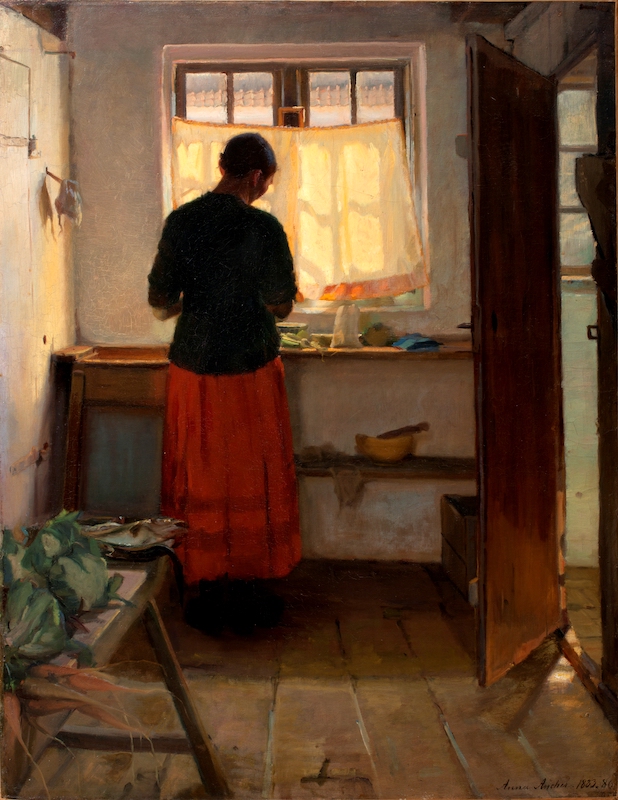
And as a result, her pictures radiate a quiet intensity reminiscent of Vermeer. The Dutch master must surely have influenced her painting of a maid silhouetted against the kitchen window, engrossed in the task of preparing vegetables (pictured above). Depicting a figure against the light is notoriously difficult and one can’t help feeling that she set up the scene as a deliberate challenge. And herein lies the key to her achievements. Her pictures are intimate but never sentimental because, although she was painting the familiar, she continually found new and radical ways to do so.
She first studied in Copenhagen and an early painting of a fisherman whittling a stick reveals her prodigious talent. The detail with which she portrays his lined face and gnarled hands is astounding, but it’s the way she highlights his intense concentration that makes the picture so memorable. Her respect for the old man shines through.

When it was shown in Copenhagen in 1880, the portrait received positive reviews and Ancher could easily have rested on her laurels and continued to produce the kind of realist pictures valued by her peers. Instead, she went to study in Paris where she was inspired by Monet’s explorations of light and colour, and light soon became one of the major components of her work – a subject in its own right.
In Boats at Sonderstrand, Moonlight (1883), for instance, two fishing boats are silhouetted against calm waters encrusted with moonlight. Elsewhere the setting sun creates a shimmering path of light across the sea and in Interior, Brøndum's Annex, 1916 (pictured above) glowing rectangles of yellow sunlight pattern the cream-coloured walls of the empty rooms.
In the same way that fish swim in water, Ancher makes us aware of light as the element in which people live and breathe. in Two Little Girls Being Taught How to Sew (1907) shadows dance across the wall behind the teacher as she checks the stitching of a young girl whose hair glows auburn in the light. Flooding in through the windows of Sunlight in the Blue Room, 1891 (pictured below) light catches the blonde hair of Ancher’s young daughter, as she sits crocheting, and illuminates her ball of thread unwinding across the carpet towards a patch of sunlight. Everything, from the girl’s clothing to the curtains, walls and floor, is painted in warm browns and oranges or a vivid blue – contrasting colours that, by intensifying each other, imbue this simple scene with a harmony that feels deep, calm and impassioned.
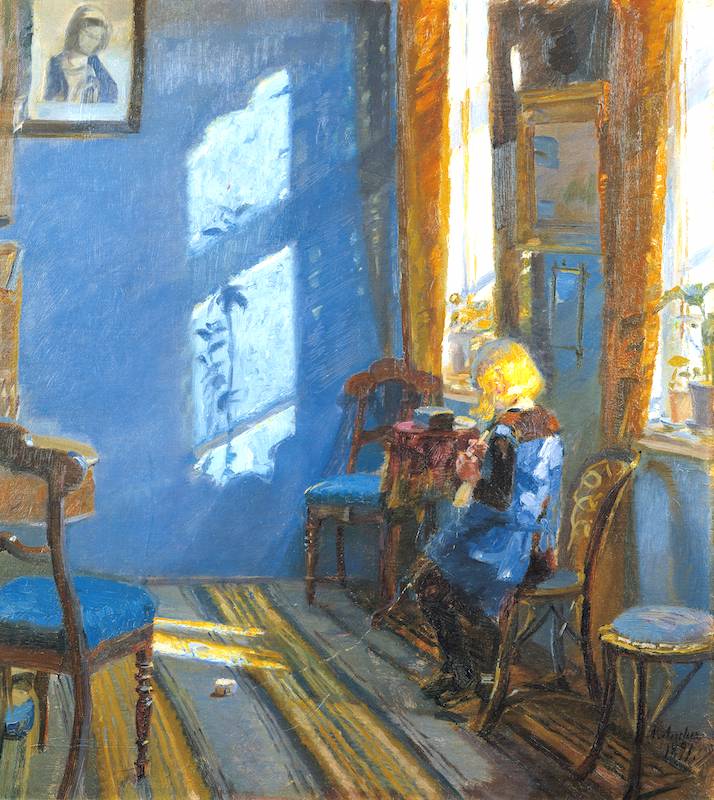
Divided into horizontal bands of yellow and blue, The Harvesters (1905) (main picture) is blessed with a sublime sense of sunny wellbeing. As they process from right to left across the picture carrying a rake and a scythe, the farm workers remind me of early Renaissance friezes of saints bearing their attributes – both comic and dignified, at the same time.
Sometimes Ancher uses light to create drama. During a firework display, the night sky is filled with a flurry of bright sparks. Elsewhere, three women sit plucking chickens. Fluttering round them is a cloud of discarded feathers; catching the light, they create a sense of chaos – the visual equivalent of terrified squawking.
At other times, she uses light to conjure deep emotion. A young woman kneels beside a grave, eyes lowered in sorrow. The mood is sombre, but instead of casting her face in shadow, as one might expect, Ancher bathes her features in a golden glow, as though to offer a healing balm – light as consolation.
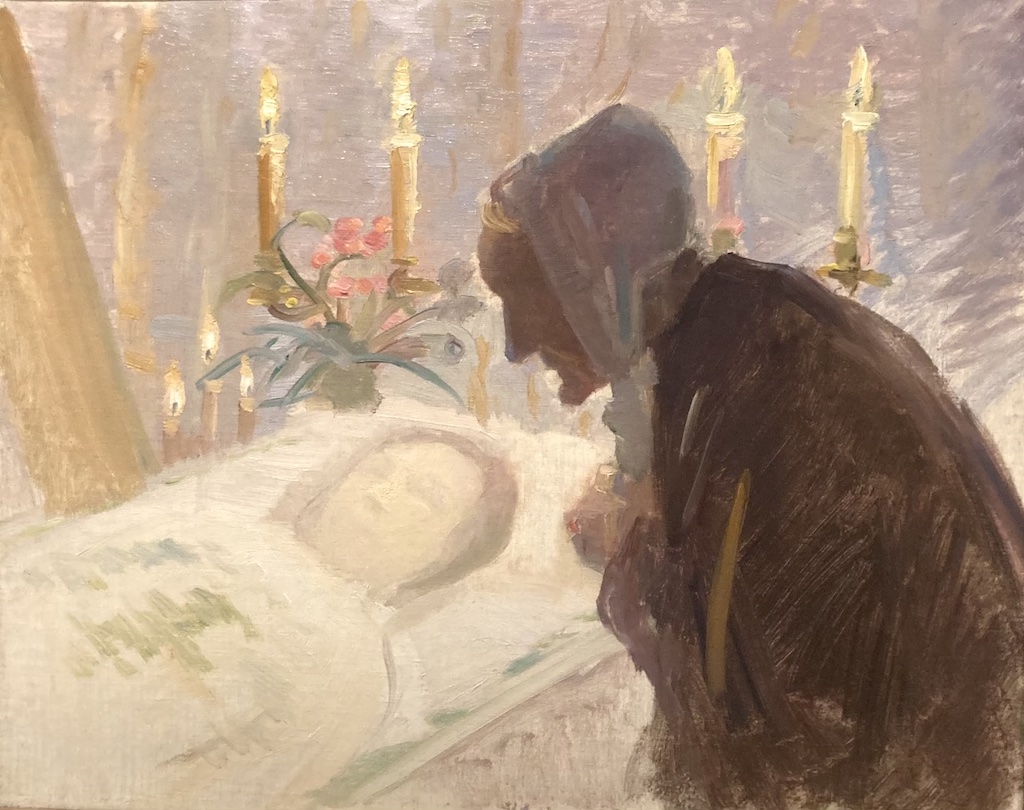
In 1910, the artists’s older sister Agnes died and, in one of her most radical paintings, Ancher portrays her elderly mother praying over the dead woman (pictured above). Silhouetted against the bank of candles bathing the body in ethereal light, the mother’s hunched form is the embodiment of grief; yet the painting is more complex than a simple deathbed scene. Compared with the stillness and pallor of the dead, the old woman’s dark presence feels like an anxious intrusion, while her sharp, witch-like profile makes her frail form seem like a harbinger of death. It’s as though, gazing at her daughter, she is anticipating her own death. Six years later, Ancher was to paint her mother lying peacefully on her own deathbed, shrouded in white.
These pictures are, then, far more than explorations in light and colour. Their power lies in their emotional heft as well as their visual intelligence. Ancher used her skill and knowledge to evoke the deep connection she felt with her subjects. And as a result, these intimate pictures are as deeply moving as they are radical – a rare combination.

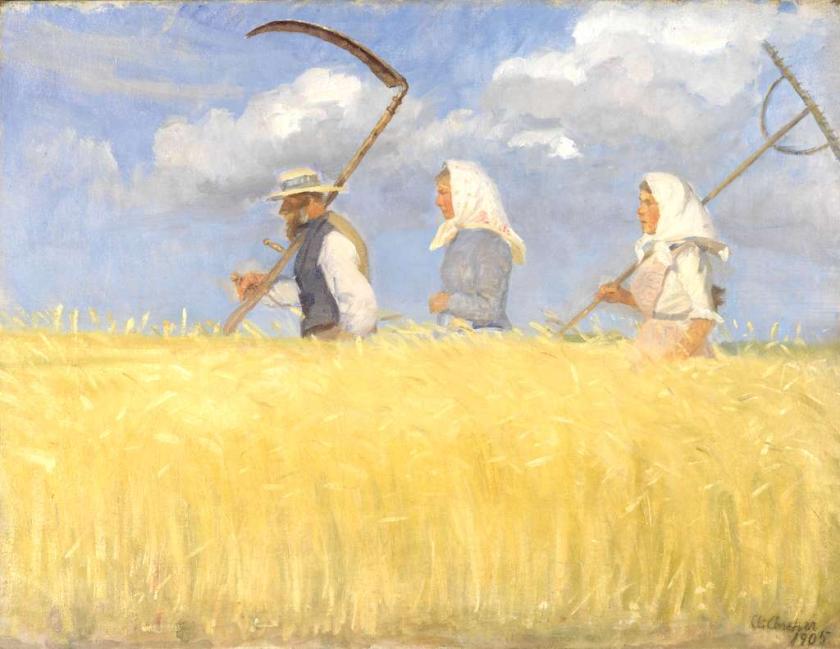






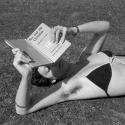
![SEX MONEY RACE RELIGION [2016] by Gilbert and George. Installation shot of Gilbert & George 21ST CENTURY PICTURES Hayward Gallery](/sites/default/files/styles/thumbnail_125_x_125_/public/mastimages/Gilbert%20%26%20George_%2021ST%20CENTURY%20PICTURES.%20SEX%20MONEY%20RACE%20RELIGION%20%5B2016%5D.%20Photo_%20Mark%20Blower.%20Courtesy%20of%20the%20Gilbert%20%26%20George%20and%20the%20Hayward%20Gallery._0.jpg?itok=3oW-Y84i)
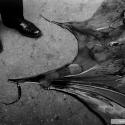
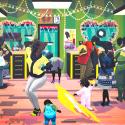

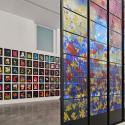

Add comment